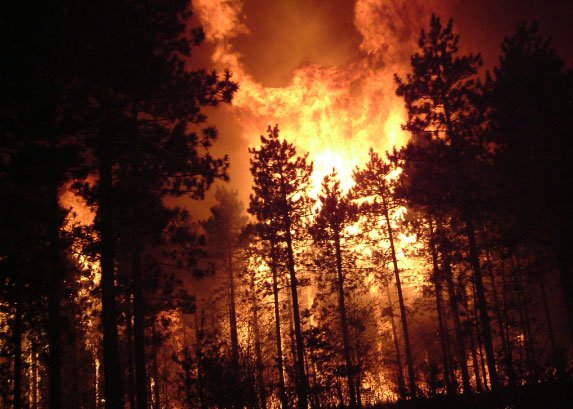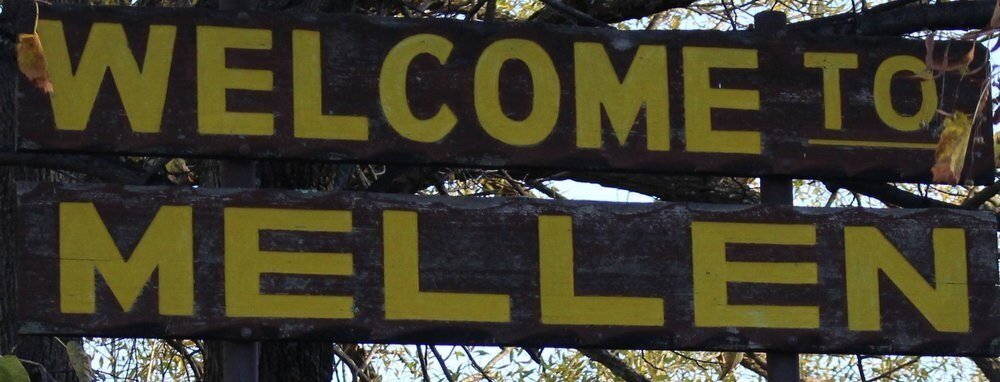Cryptid Profile: The Lake Koshkonong Monster
Between 1921 and 1945, Wisconsin Historical Society Museum curator Charles E. Brown wrote a series of pamphlets collecting all sorts of legends and folklore found throughout the state of Wisconsin. Within this 24yr long writing period (specifically 1942), Brown wrote a pamphlet called “Sea Serpents” which compiled nine pages worth of different lake monster stories told throughout the state. And within the foreword of this collection, Brown states that the first Wisconsin lake monster was believed to have “shown up” in the state back in 1882 and was known by everyone as Rocky, the Terror of Rock Lake.
For nearly 136 years, since the first lake monster sighting in 1882 until now, people have continued to see unknown creatures within various bodies of water throughout the entire badger state. It was once even said that there have been monsters sighted in almost every lake and river throughout the entire state. Needless to say, that’s a lot of history associated with a type of creature thought not to exist.
With so many homegrown monsters available to choose from, it can at times be a bit overwhelming for a chronicler to decide which one to write about. But after giving it a bit of thought, we have decided to showcase a creature that is widely believed to have first officially appeared 131yrs ago in 1887. A monster that has only been reported in detail once, but has left its mark on the surrounding area for all these years. A creature known as the Lake Koshkonong Monster.
Before we jump into the official historical sighting, we should first quickly talk about the lake itself. Lake Koshkonong is a 10,595-acre lake located primarily within Jefferson County, but also extends into both southern Dane County and northern Rock County, Wisconsin. The lake is 37mi from the state capital of Madison, and only 22mi from Janesville, the location of the Pine Barrens Institute (the more you know). The lake, which is connected to the Rock River on both ends, is filled with Musky, Panfish, Large and Smallmouth Bass, Northern Pike, Walleye, and Catfish. The visibility in the lake is extremely low and the DNR states that the max depth is only 7ft. The lake is one of the largest in the entire state and has drawn people to its waters for hundreds of years.
Now that the facts regarding the lake have been given, let’s move on to the main reason you are reading this, the history of the Lake Koshkonong Monster. Prior to European settlers setting up borders and staking claims of land throughout Wisconsin, the Potawatomi Tribe called a significant part of the state home. Camps and villages could be found alongside many rivers and lakes within the state, and of course as you’ve probably already guessed, one of these lakes was Lake Koshkonong. As with many large bodies of water that helped provide for the Native Americans who lived beside them, Koshkonong had a legend of a monstrous creature that dwelled within attached to it.
The legend states that a demon (the word used instead of monster) lived within the lake and was not accepting of anyone attempting to cross without first giving an offering of tobacco and any other items that the tribe gave value to. If no offering was made, the demon would overturn the canoes of those who had offended it in a great fury and would drag their bodies below the surface to drown and devour them within the comfort of its underground cavernous home. Because of this fear, nearly all believed that a true demon dwelled within the lake. That is except for two brothers who believed the demon was nothing but a story made up to scare fellow members of the tribe. And to prove their point that it was nothing but a story, the brothers set out to test the demon.
When the day arrived for the brothers to prove the demon false, each placed a canoe on opposite sides of the lake. They were going to each paddle out from their respective sides without making an offering, cross each other in the center of the lake, and then continue on to the opposite side. As the brothers made their way across the water, a crowd began to gather. Nervous onlookers watched as the pair paddled without issue towards the center of the water, and many started to think that they may have been correct in their belief that the monster wasn’t real. But that thought was to be short-lived.
As the brothers came within a few feet of each other, a powerful storm showed up out of nowhere. The water began to violently churn and bubble as it tossed the canoes from side to side. As the brothers held on to their canoes and screamed for help, a large wave rose up and slammed down upon them. After the fury calmed, both the brothers were gone. The demon it had seemed, had dragged them below the surface back to its home. The next day, their fellow tribesmen found their bodies washed up onshore. Each brother had a noticeable amount of white clay packed within their mouths, nostrils, and ears. This clay was the final proof the tribe needed to prove the demon was real and had been the one responsible for their deaths.
But why was the white clay so significant? The reason is that the Potawatomi believed that this white clay was only found in the demons cavernous home below the lake. They believed that all water demons (also called Waterspirits) created their homes below lakes and rivers by first hollowing out a suitable area and then covering it with their dung, which is the white clay. So to find a body covered in this white clay, it could only mean that their body had truly been taken to the dwelling of a water demon prior to turning up on shore.
After this memorable event, the legend of the demon in Lake Koshkonong became truth for the Potawatomi and other tribes in the area. The lake was both feared and given the respect it deserved. But for the white men in the area, the legend of the demon in the lake was nothing more than a scary story and had no basis in truth whatsoever. The lake was simply an area for which to gather food and set up businesses and farmland. As time went on, the legend of the Lake Koshkonong demon faded and slipped in obscurity within the minds of those who lived around the lake. That is until November of 1887 when two men had an encounter with something nobody could explain.
One day in early November, two men by the names of A.I. Sherman (from Ft. Atkinson), and his cousin Charles Bartlett (from Milwaukee) were out duck hunting on the lake when they took notice of a strange-looking snake-like creature swimming through the water nearly 150ft away from them. The men watched as the creature swam with its head held nearly two feet above the water. Behind it, they saw a large portion of the serpent-like body moving through the water, disappearing and reappearing as the waves moved over it. The men believed that they could make out at least 10ft of visible body and that it was between 8-12in thick. The creature was also moving at a speed fast enough to create a wake that hit their boat and moved them significantly across the surface. Because of this, the men speculated that the creature had to be around 30-40ft long overall.
Now it usually goes without saying that when people have had sightings or close encounters with lake monsters, they typically make it a priority to get back to shore as quickly as possible. But the two cousins appeared to be anything but typical witnesses as they actually rowed towards the creature in hopes of killing it in order to pull its body to shore. As the cousins got closer, the unknown creature quickly turned and looked at them, after which it dove beneath the surface and disappeared from view. The two men, obviously disappointed in how their chase ended up, turned their boat around and headed back to shore. After landing, the pair made their way into town and proceeded to tell their story to anyone who would listen. One set of listening ears happened to belong to a reporter for the Watertown Republican Newspaper; the man went on to write the story which retold the encounter and preserved the only sighting of the Lake Koshkonong Monster which went on to become part of Wisconsin history.
After the sighting, a few other people from the area came forward to report that they believed they had also encountered the monster in some as well. Unnamed fishermen reported that some large creature had not only gotten caught within their nets but had also managed to break through them. The fishermen were unable to see what exactly was caught in the nets due to the murkiness of the water, but they believed it may have been the monster. Others though believe that the culprit was nothing more than an oversized musky caught in an old weak net.
Later, a farmer located on the west side of the lake came forward and claimed that something large took and devoured some of his pigs that were feeding near shore. The bodies were never found, but the creature responsible does not sound like the same creature originally seen by the two cousins. The creature first reported was thought to be between 8-12in wide and 30-40ft long, this seems much too “small” to be responsible for grabbing multiple full-grown pigs at once and devouring them so completely so as to not leave a trace. But, to play devil's advocate, a lake monster has never been caught and studied so we don’t know how they operate and what they are capable of.
After the sighting in 1887, the Lake Koshkonong Monster seems to have simply vanished. No verifiable sightings were ever made again and the story grew into a local legend. While many believe that the creature could never truly have existed in a lake that was only 7ft deep to begin with, others feel that it was not only real but that it somehow relocated itself from Lake Koshkonong over to Red Cedar Lake near Ft. Atkinson.
Red Cedar is another lake in Wisconsin that not only had its own monster sightings in 1891, but was also connected to a third lake which had a series of monster sightings between 1895 and 1945, Lake Ripley. Could this one monster somehow be responsible for all the sightings of lake monsters within this area at the time? Or were these sightings nothing more than cities and towns hoping to jump on the Fortean bandwagon and bring in tourist dollars from those visiting the area with hopes of seeing a monster?
While the events of what took place on Lake Koshkonong in November of 1887 may never be truly explained, the “monster” is not entirely gone from the lake and surrounding area. Yes, the creature itself seems to have vanished, but the legend has continued on. And it seems that the legend has found new life as it is currently used to help promote a charity race for wounded veterans. The ‘Wake The Monster’ ice race is a 2hr motorcycle endurance race that takes place on a frozen Lake Koshkonong during the winter months in Wisconsin. All proceeds raised are donated to 'Race For The Wounded’, a charity organization that helps wounded war veterans integrate and adjust back into society through competition.
So there you have it, the legend of The Lake Koshkonong Monster. A creature that was only spotted once, but has affected things in the area for 130+ years since. Was it real? Was it fake? Does it really make a difference? Because from how we see it, it seems to be doing some good now, and that’s all that really matters in the end.
-The Pine Barrens Institute
Image Credit: Public Domain
Do you have a strange tale, family legend, or odd sighting you would like to report? Get in touch with us here to share what you know!
Want more strange stories in your life? If the answer is yes, then make sure to check out our books ‘Monsters In Print: A Collection Of Curious Creatures Known Mostly From Newspapers’ and ‘Ghosts In Print: An Assemblage of Spirits, Spooks, and Specters From Newspapers of Old’, both available from Amazon!
Make sure to also check out our shop for official PBI shirts, totes, buttons, and stickers!































